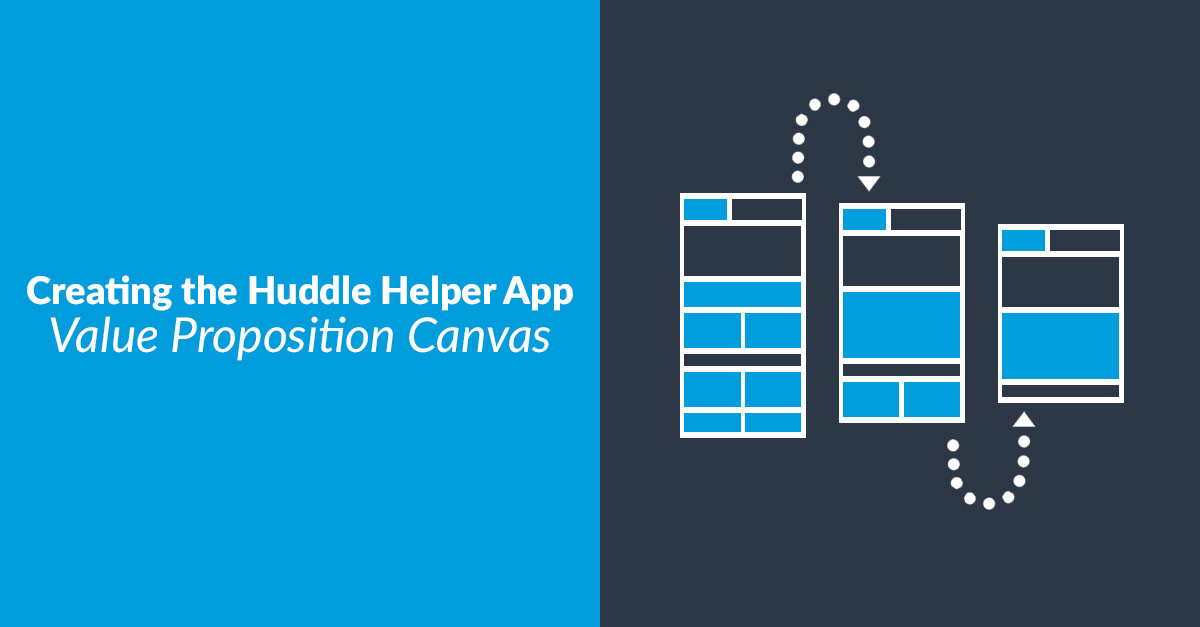
You told us you want to know more about the process we use to build custom software. You got it. Follow along as we build our new Huddle Helper app. This is the 2nd post in that series. You can read the 1st post here.
Every time we work with a client, we want to build a software product that people are going to use, and in some cases, pay to use. Sounds like a no-brainer, but many first-time entrepreneurs think this is an easy proposition. "If you build it, they will come." That may have worked for Ray in “Field of Dreams,” but it typically doesn’t work in product development.

Sure, it’s easy to build something that provides some value. But does it provide the right amount of value (value proposition) to the right group of people (customer segment)? If the answer is "no," then you may be wasting your time and money on a product or service nobody will purchase or use.
Value is a finicky thing. When I purchase something, for the most part, I want it to "get the job done." However, my wife will pay more if it’s more visually appealing. There are numerous other factors that people equate to value: newness, performance, customization, price, brand/status, cost reduction, risk reduction, accessibility, and convenience/usability.
The most successful products are able to find the spot where the product's value proposition intersects with targeted customer segments.
To find this "fit," we use the Value Proposition Canvas. The Value Proposition Canvas is composed of two sub-sections of the Business Model Canvas:
- The value proposition
- The customer segment
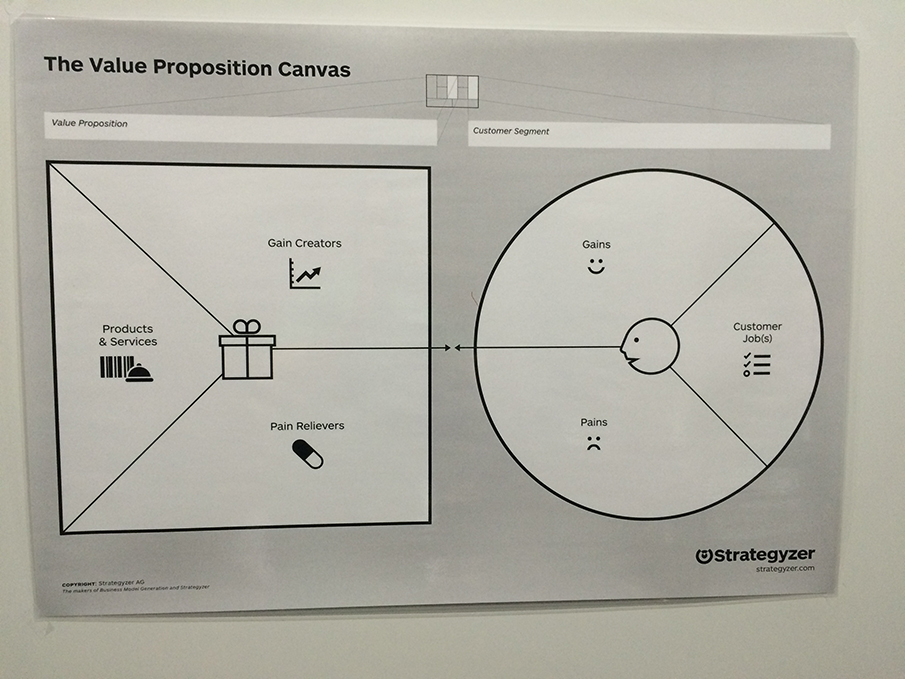
Working right to left on the canvas, we have:
Customer Segment
- Gains = Things that rock and make the customer happy
- Pains = Things that suck and make the customer sad
- Customer Jobs = Things the customer does
Value Proposition
- Gain Creators = How the product will make your customers’ jobs rock more
- Pain Relievers = How the product will make your customers’ jobs suck less
- Products & Services = Things your product offers
How We Applied the Value Proposition Canvas to Our App
For the Huddle Helper app, we went through the Value Proposition Canvas to help us narrow our MVP and validate whether it was something people would use.
Step 1: We identified the three customer segments the Huddle Helper app would target: hamburger givers, hamburger receivers, and the individual overseeing the hamburgers (HR). Once identified, we went through the iterative process of gathering feedback, prioritizing, and validating assumptions made when creating the customer segments. Then we prioritized a list of jobs, pains, and gains for each segment.
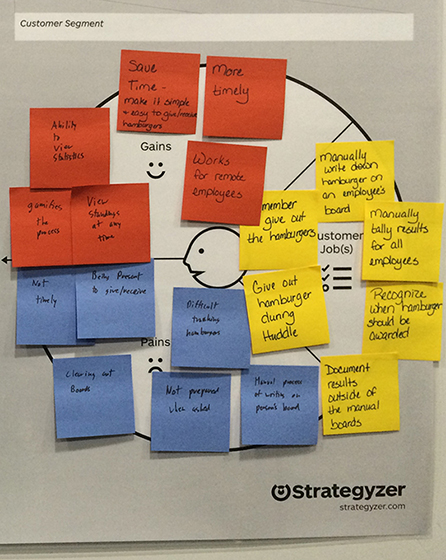
Step 2: We filled out the value proposition section of the canvas. Again, this was an iterative process of validating whether the Huddle Helper’s features would relieve/enhance the identified pains/gains.
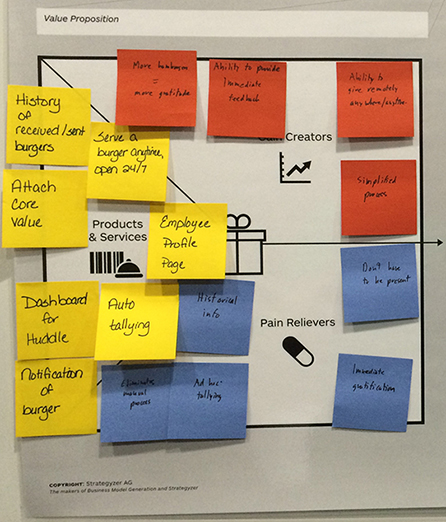
Step 3: We mapped the value proposition to the customer segments and saw that the product’s pain relievers and gain creators aligned well with the highest priority jobs, pains, and gains. Based on this, we made the decision to proceed with the project. We realize this is a smaller application, but this process scales well. We have used it on much larger projects.
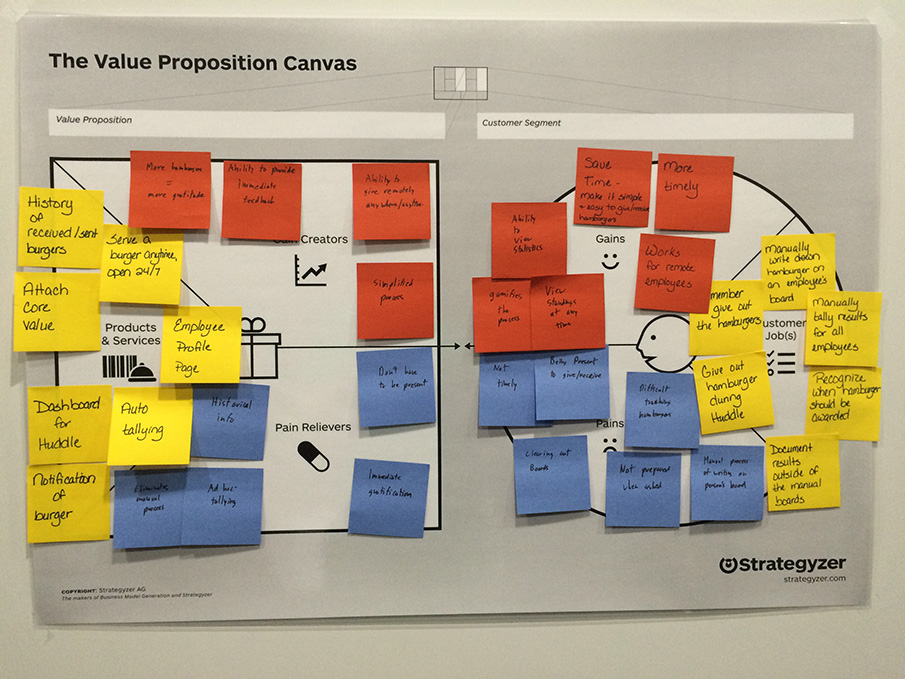
Some of the feedback gathering techniques we used to validate the canvas include:
- Employee survey – Some of the questions we asked:
- What is the one thing that makes it challenging to give a hamburger?
- What is one thing that would make it easier to give a hamburger?
- On a scale of 1-5, how likely are you to use an app to record your hamburgers? (1 – won't use and 5 – I'll use it)
- If you would use the app, how would you use it: desktop, phone, and/or other?
- Prototype – Far Reach uses HipChat for internal messaging. We created a hamburger room to validate that people would use technology to give hamburgers.
Benefits of the Value Proposition Canvas
Sure, working on a value proposition canvas takes effort. But the benefits can be big:
- The process forces you to interact with and better understand your target market.
- You make fewer assumptions. And you know what can happen when you make assumptions!
- It helps you prioritize your functionality, which shortens time to market, saves money, and focuses resources on high priority items.
- Finding "fit" gives you a better chance of building something people will use vs. "If you build it, they will come."
- This concept transcends software development. It can be applied to clubs, communities, schools, and more. If you’re building something that needs buy-in from others, then working on your offering's value proposition will increase your chances of success.
Conclusion
Hopefully, from this simple example, you can see the value in value proposition design. With it, you can move forward with your product more confidently. Without it, you risk wasting your time and money on a software product nobody will purchase or use.
Note: In the Huddle Helper project we had intimate knowledge of the customer segments, as the team members represented all but one of them. Thus, we didn’t spend a lot of time validating the canvas. The book "Value Proposition Design" walks you through—in much more detail—the process of creating and validating the canvas.
Read part three of the series, Personas.